Marseille Cruise Port Guide: 12 Highlights You Can’t Miss
Marseille is the second most populated city in France and the capital of the Provence-Alpes-Côte d’Azur region.
It is a colorful and diverse city known for its magnificent architecture, unique culture, vibrant Vieux-Port (Old Port), and a variety of historic landmarks.
It is also a gateway to the popular cities of Aix-en-Provence, Avignon, and a breathtaking Calanques National Park.
Due to its convenient location and rich tourist offer, Marseille is a frequent stop in the Western Mediterranean cruise itineraries. In this article, read about:
- Marseille cruise port (Marseille cruise terminal, getting around)
- 12 best things to do in Marseille (including shore excursions to Château d’If, Cassis, Aix-en-Provence, Avignon, Parc National des Calanques)
Cruise Port of Marseille
Officially called Marseille Fos Port, the port of Marseille is one of the leading ports in France and one of the major transit ports for cruises and ferries in the Mediterranean.
It consists of two cruise ship terminals: La Joliette Cruise Port (operated by Port of Marseille Fos) and Marseille Provence Cruise Terminal (operated by M.P.C.T).
1. Joliette cruise terminals
This cruise port is located near Place de la Joliette and within walking distance of the Vieux-Port de Marseille (Old Port), the main tourist district where the city’s main landmarks and attractions are located.
La Joliette cruise terminal has several berths and is dedicated to small and medium-sized vessels including cruise ships, tender boats, cargo ships, mega yachts and ferries with lengths less than 200 m/565 ft.
Small cruise ships usually dock at J4 Terminal, however, the majority of the cruise vessels are too big to dock here, so they dock at MPCT (read more below).
Joliette cruise port also serves ferries to Corsica, Sardinia and North Africa (Algeria, Tunisia, Morocco).
2. MPCT (Marseille Provence Cruise Terminal)
This cruise ship terminal is also known as MPCC (Marseille Provence Cruise Center) or Môle Léon Gourret piers.
MPCT is located in the industrial zone northwest of the Vieux-Port de Marseille, approximately 8 km/5 miles (a 20-minute drive) from the city center.
MPCT has six berths that can accommodate up to 6 cruise vessels at a time, regardless of the size.
There are six cruise terminals (Terminals A, B, C, D, F, E) with modern cruise terminal buildings offering embarkation/disembarkation facilities, luggage drop-off, check-in areas, and large car parks.
MPCT is both an embarkation port and a port of call. You will also find a cafeteria, a tourist information office point, and several ATMs.
How to get to Marseille city center from MPCT?
The first option is to take the local bus 35T which leaves from the port exit (Porte 4) and ends in La Joliette cruise terminal. This line is specifically made for cruise passengers and connects the two terminals.
There is a considerable amount of walk to reach the bus stop from the terminal buildings, from 800 m to 2 km, depending on where your ship docks.
You can either take a taxi for a short drive or simply walk up to 20 minutes following the green line to reach it.
Once you arrive at Joliette, you can take a 15-minute walk to the Vieux-Port de Marseille.
Alternatively, the port of Marseille may offer a free shuttle bus service exclusively for cruise passengers.
The shuttle bus runs approximately every 30 minutes between the Môle Léon Gourret (you’ll find the shuttle bus stop on the way to the port exit) and Joliette terminus, stopping at the vast Les Terrasses du Port shopping mall along the way.
The schedule of these free shuttles may vary based on the season and the number of ships in port.
You may encounter long queues on busy days.
Cruise lines normally don’t advertise this option to the passengers to avoid their competitors (cruise lines tend to sell their shore excursions/paid shuttle buses).
Cruise lines normally offer paid shuttle bus service to Marseille’s Old Port which may cost around 20€ round trip depending on the cruise line. It takes around 20 minutes drive to reach Marseille downtown.
Taxis are available in the terminal area. It is more convenient to share a taxi if you travel with a group than to buy individual shuttle bus tickets.
You can always book a shore excursion by your cruise line/independent tour operator if you opt for a guided option.
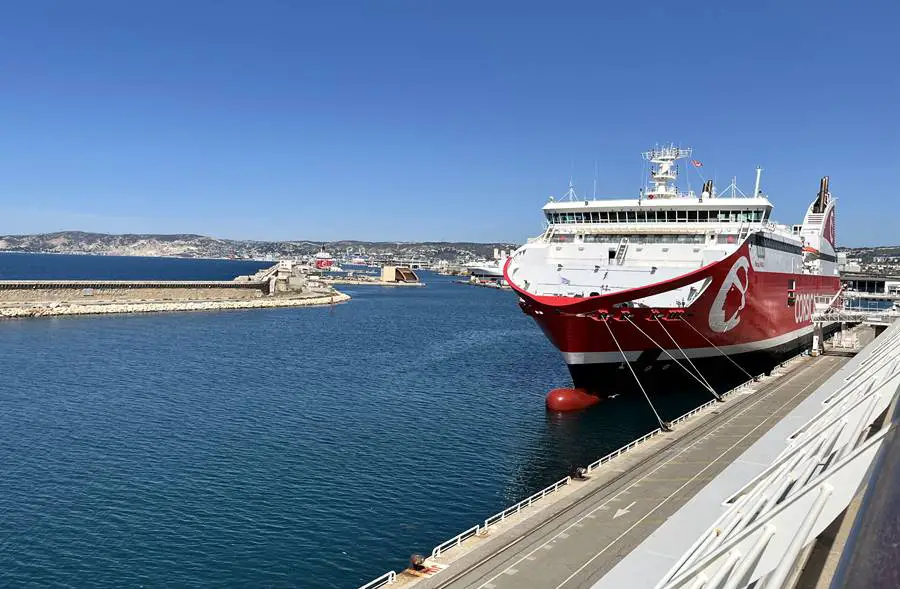
Getting Around Marseille Port
- The currency in Marseille France is EURO (€). Local currency and credit cards are widely accepted. ATMs are available at the cruise terminal and in the city.
- Marseille Provence Airport (Aéroport Marseille Provence) is located around 20 km/12.5 miles (a 20-30 minute drive, depending on the traffic) from MPCT.
- Since MPCT is also a turnaround port (cruises start and end here), you may need a transfer from the airport to the cruise terminal. Some cruise lines offer transfer options for a fee. Alternatively, to get to MPCT from the airport you can take the airport’s shuttle bus to Marseille Saint-Charles station and then take public transport (metro line 2 to Joliette and then bus 35) or a taxi to the cruise terminal. However, this option is very time-consuming and complicated, and it’s better to arrange a private transfer or take a taxi directly from the airport. Book a private transfer to/from Marseille cruise port
- Public transport in Marseille (bus, tram, metro) is operated by RTM (Régie des transports métropolitains). A single ticket purchased costs 1.70€ and is valid for 1 hour of connection (including round trip) throughout the RTM network. The best option for cruise passengers is to buy a day pass which costs 5.20€ and covers unlimited rides on all public transportation. You can purchase the day pass and tickets at the bus stop at the cruise terminal. Visit the official RTM website here for more info https://www.rtm.fr/
- Marseille-Saint-Charles train station (Gare de Marseille-Saint-Charles) is the main railway station in Marseille, located around 2 km/1.2 miles (10 minutes drive) from Vieux-Port de Marseille and Joliette terminals. Trains in France are operated by SNCF (National Railway Network) and you can check the departures and fares on the official website https://www.sncf.com/en
- Petit Train de Marseille (Train Touristique de Marseille) is a little tourist train that allows you to have a commentated train ride through the city with stops at major tourist attractions. The trains depart from the Old Port (Vieux-Port de Marseille), at 174 Quai du Port. There are 3 different routes and the duration of each one is around 30-40 minutes. You can find all the information on the official website https://petit-train-marseille.com/
- Colorbüs is a Marseille Hop on Hop off sightseeing bus that allows visitors to hop on and off at 25 stops in the city as many times as they want. There are a Red line, Blue line and Combined pass (Red+Blue) that cover all main Marseille attractions including the seaside and the city suburbs. Colorbüs Marseille also departs from the Vieux Port de Marseille (86 Quai du Port). Check out Colorbüs tours and tickets on Viator and Get Your Guide
- Marseille City Pass (24h, 48h and 72h) allows access to dozens of attractions, museums, Little Train Tour, boats, guided tours, unlimited public transport tickets, and more. Buy Marseille City Pass
- Explore Marseille tours and activities
- Rent a car in Marseille
- Check out the best hotels in Marseille
Watch my YouTube video on Marseille Cruise Port and the best things to do in Marseille!
Planning a Stop in Marseille? These Ports Are Often Included in the Itinerary
Many itineraries also include Barcelona, a major homeport filled with world-famous landmarks, and Palma de Mallorca, known for its stunning beaches and Gothic cathedral.
Cannes and Villefranche are common stops along the French Riviera, offering access to Nice, Monaco, and Antibes.
Further along the route, Livorno and La Spezia serve as gateways to Florence, Pisa, and the Cinque Terre, while Ajaccio in Corsica offers dramatic landscapes and Napoleonic history.
The port of Valletta (Malta) is another highlight, with its medieval streets and impressive harbor views.
Many itineraries also include Naples, a starting point for visiting Pompeii, Capri, and the Amalfi Coast, and Civitavecchia, the main port for Rome, rounding out some of the most popular Western Mediterranean sailings.
12 Best Things to Do in Cruise Port of Marseille
Before I share the best things to do in Marseille, I invite you to grab your copy of the “Mediterranean Cruise Port Guide”, the most comprehensive guide to 45 Mediterranean cruise ports (including Marseille), packed with practical information, expert tips & unforgettable experiences! (PDF format/200 pages)
1. Vieux-Port de Marseille (Old Port)
The Old Port of Marseille is located at the bottom of the famous Canebière, the main shopping street of Marseille.
Guarded by two massive forts (Fort Saint-Nicolas and Fort Saint-Jean), the iconic Old Port is the oldest part of the city and the place where the history of Marseille began.
Vibrant, colorful and bustling with people, the Old Port has been the beating heart of the city for centuries and is nowadays a symbol of Marseille.
Besides promenades packed with cafes, restaurants and shops, here you can find a fish market (Marché aux Poissons) on Quay des Belges, the 17th-century Baroque building of the City Hall (Hôtel de Ville), a metro station, Colorbüs hop on hop off bus station, ferry boats, Petit Trains de Marseille and many other attractions.
Old Port is also one of the main places to eat in Marseille, so make sure you try out delicious local seafood specialties!
From the Old Port, you can walk into the La Canebière, the main shopping street that stretches 1 km from the Old Port to another beautiful landmark – St. Vincent de Paul Church.
Half pedestrian-only, and half open to vehicles and trams, La Canebière dates from the 17th century and is lined with public institutions, small businesses, shops, restaurants, and cafes.
Check out Marseille Old Port tours and activities
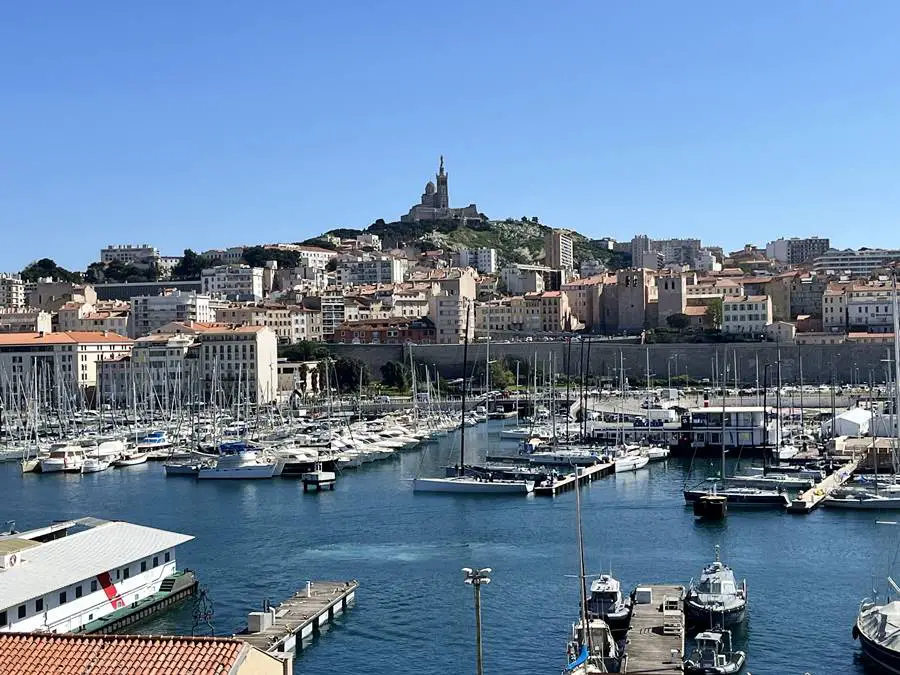
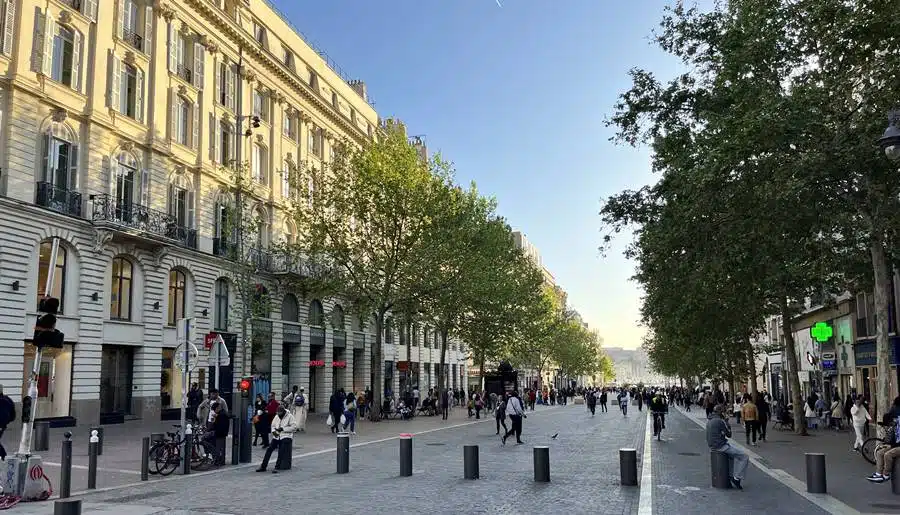
2. Notre Dame de la Garde
Built in the 19th century on the foundations of an ancient fort on the top of the city’s highest hill, Basilique Notre Dame de la Garde (known as “la Bonne Mère” – “the Good Mother” among the local population) is the symbol of Marseille and the city’s most visited landmark.
The impressive Romano-Byzantine basilica is famous for its lavish interior and grand bell tower capped with the golden statue of the Virgin Mary.
The church dominates the city skyline and can be seen from downtown. The plateau surrounding the basilica offers the most spectacular views of the city.
It is located at approximately 2.5 km/1.5 miles (a 35-minute walk) from the Old Port and you can reach it on foot (multiple stairs involved) or via bus (bus no. 60 stops in front of the basilica). Access to the church is free.
Explore Notre Dame de la Garde tours and activities
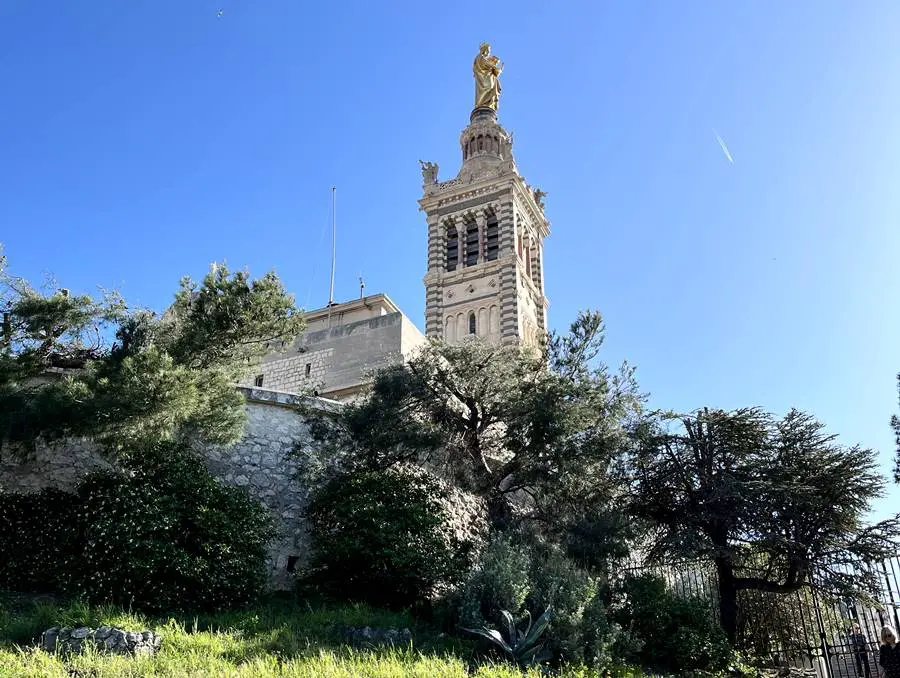
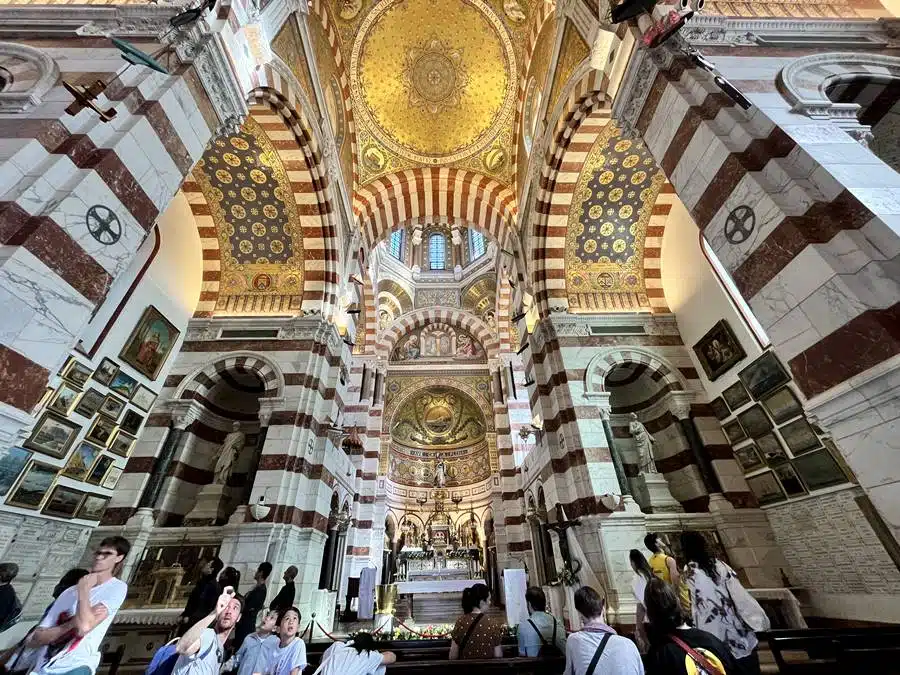
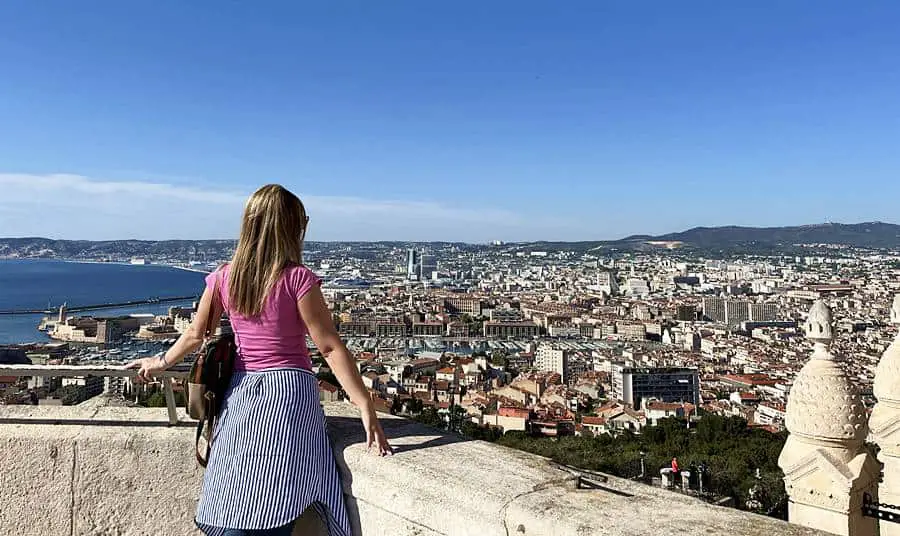
3. Le Panier (Marseille’s Old Town)
Le Panier neighborhood is Marseille’s Old Town, located just north of the Vieux-Port, easily accessible from both La Joliette Cruise Terminal and the Old Port within a 5-10 minute walk.
The Panier is famous for its steep alleys, artistic ambiance, colorful murals, old and tall buildings, historic squares and hilly streets filled with authentic cafes, eateries and shops.
Some of the major city landmarks are located in Le Panier:
Marseille Cathedral
Also known as Cathédrale Sainte-Marie-Majeure de Marseille and Cathédrale de la Major, this stunning cathedral built in the Byzantine and Roman Revival styles dates back to the early 19th century and is renowned for its magnificent interior lined with murals, mosaic and marble.
The cathedral overlooks La Joliette cruise port.
Vieille Charité (Centre de la Vieille Charité)
Situated in the heart of Le Panier, only 600 m from Marseille Cathedral, this exceptional building was designed by the Marseille-born architect Pierre Puget and built between 1671 and 1749.
Originally built as an almshouse (a charitable housing for the city’s poor and beggars), this domed architectural gem today houses the Marseille International Poetry Centre, the Museum of Art of Africa, Oceania and Amerindia, research centers, art galleries, museums and a bookshop.
Saint Laurent Church
The 12th-century church of Saint Laurent and the adjoining 17th-century chapel of Sainte-Catherine dominate La Joliette, Le Panier district and the Old Port from a hilltop.
MUCEM – Museum of Civilizations of Europe and the Mediterranean
A museum stands at the entrance to the Vieux-Port and offers an amazing insight into the civilizations of the Mediterranean.
Musée Regards de Provence
This classic and modern art museum overlooks La Joliette wharves and is located across Mucem, next to Marseille Cathedral.
Église Notre-Dame-des-Accoules
Another beautiful place of worship located right behind the City Hall, a few blocks away from the Vieux-Port.
Place de Lenche
One of the most famous squares where you’ll find numerous eateries and cafes.
Check out Le Panier tours and activities
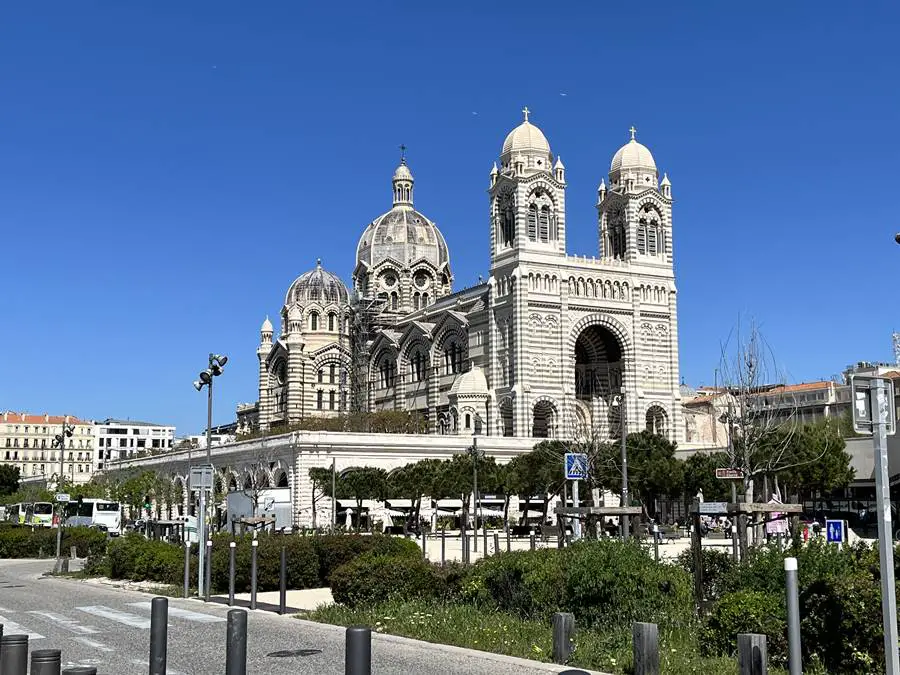
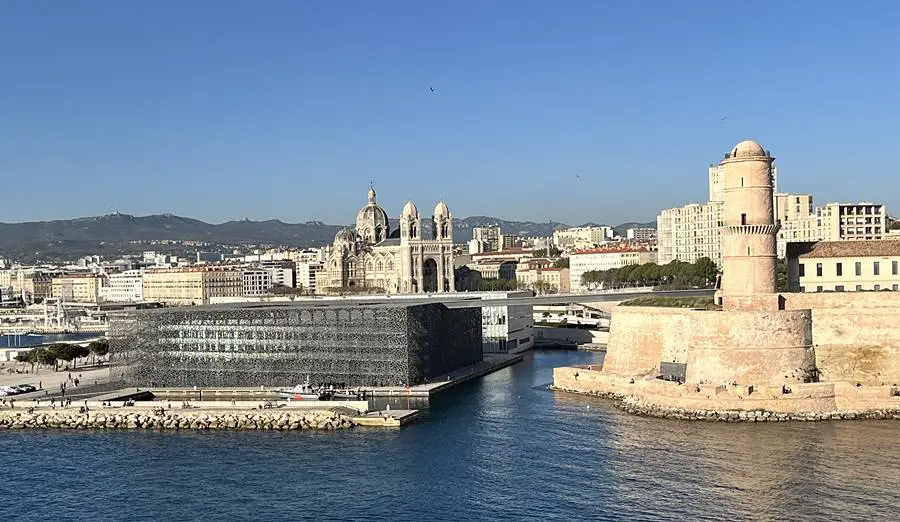
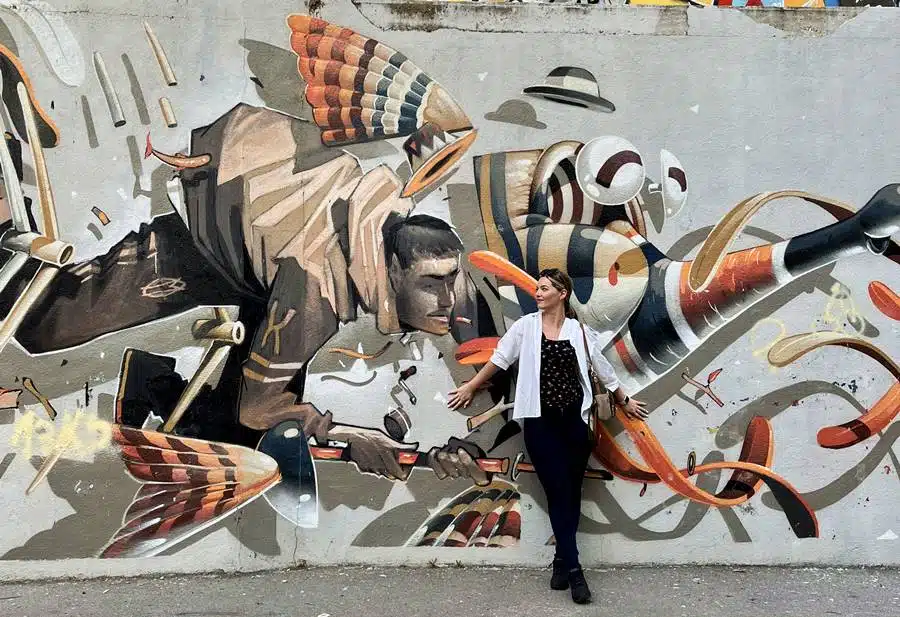
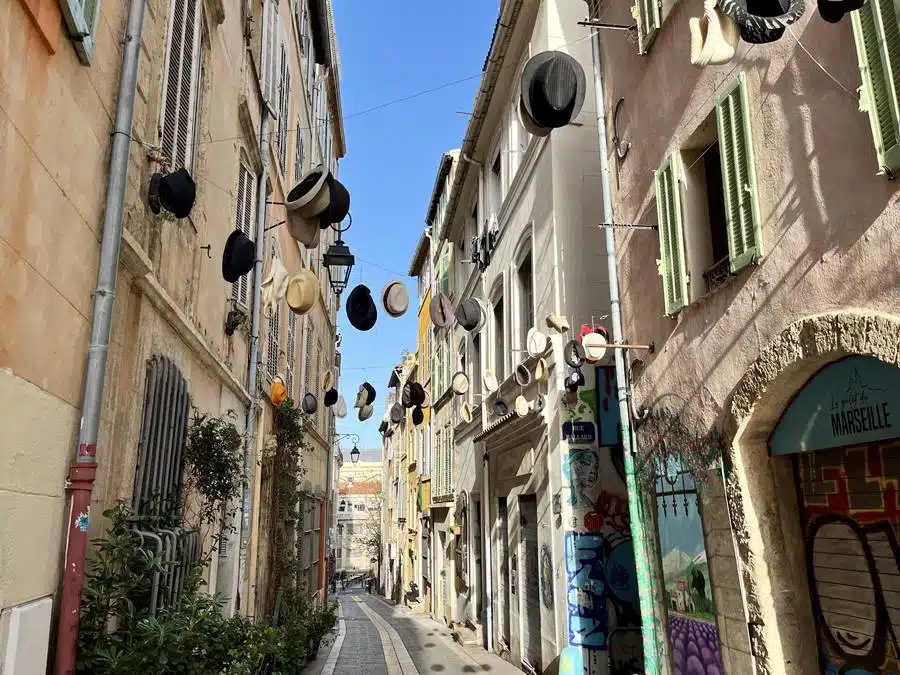
4. Vallon des Auffes
Located in the 7th arrondissement of Marseille, 2.5 km/1.5 miles (a 30-minute walk) southwest of the Vieux Port, Vallon des Auffes is a small Provençal fishing village and a fishermen’s paradise.
Nestled between two cliffs, at a stone’s throw from the Catalan beach, this charming village boasts picturesque fishermen’s huts and small traditional fishing boats scattered on both sides of Pont du Vallon des Auffes, a concrete arched bridge built in the 19th century, during the construction of the Corniche of President John F. Kennedy.
Vallon des Auffes is a true hidden gem of Marseille and if you are looking for a peaceful oasis and fresh fish specialties, this is the place to go!
Explore Vallon des Auffes tours and activities
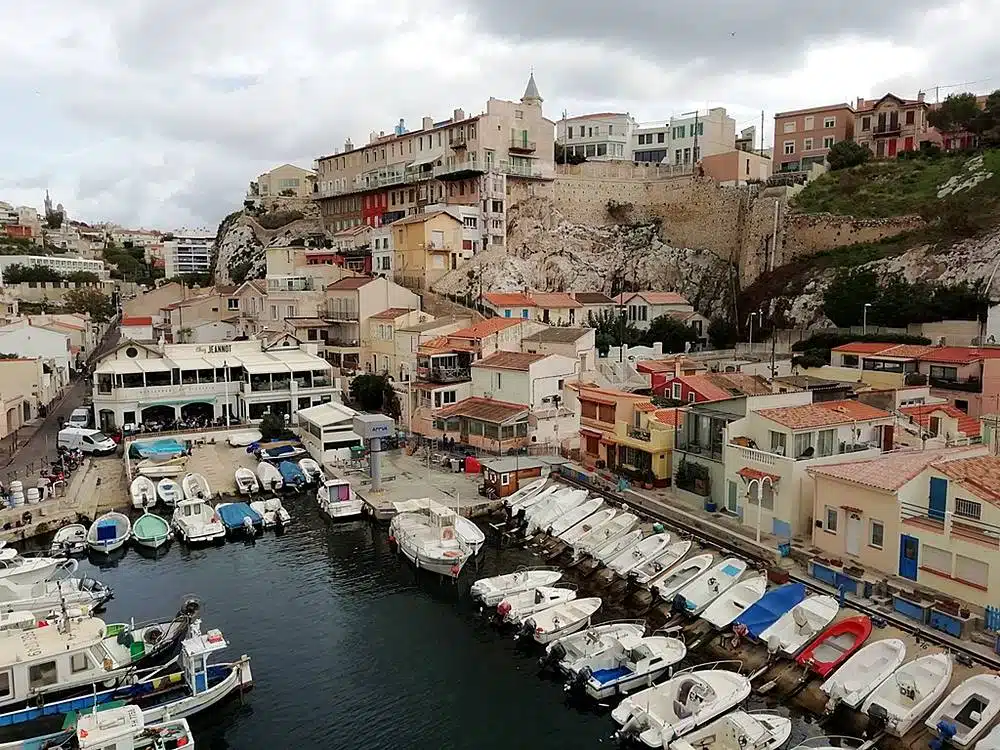
5. Palais Longchamp
The breathtaking Palais Longchamp is located in the 4th arrondissement of Marseille, roughly 2 km/1.2 miles (a 30-minute walk) east of the Vieux-Port.
This impressive historical monument was constructed in the 19th century to bring water to the city and nowadays is home to the Museum of Fine Arts (Musée des beaux-arts de Marseille, east wing of the palace) and Natural History Museum of Marseille (Muséum Histoire Naturel de Marseille, west wing).
The palace is surrounded by a wonderful park filled with animal sculptures and an imposing fountain with cascades (known as château d’eau or “water castle”).
Palais Longchamp area is open to the public and is a true green oasis in the middle of the bustling city.
To get to Palais Longchamp from the Old Port’s metro station “Vieux Port”, you need to take a metro line M1 in the direction of La Rose, and get off at the metro station “Cinq Avenues Longchamp”.
The ride takes 6 minutes and you get off at the fourth stop. From there, you need to walk for about 500 meters to the entrance to Palais Longchamp.
Check out Palais Longchamp tours and activities

6. Château d’If
The iconic Château d’If is a fortress and former prison famous for being one of the settings of Alexandre Dumas’ adventure novel “The Count of Monte Cristo”.
Château d’If is located about 1.5 km/1 mile offshore from Marseille and 5.5 km/3.5 miles from the Vieux-Port. It is the smallest island in the Frioul archipelago known for being entirely fortified and centered around the “château”, a square, three-story building flanked by three towers with large gun embrasures.
The château was built in the 16th century for military and defensive purposes, however, it was mainly used as a dumping ground for political and religious detainees throughout the centuries.
Today, Château d’If is a historic monument and a tourist attraction that can be visited by ferry from the Vieux-Port.
Check out Château d’If tours and activities
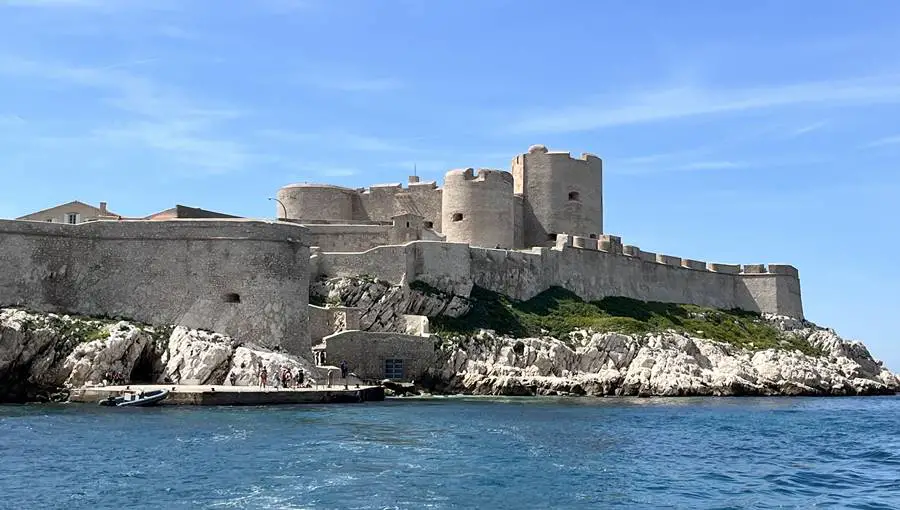
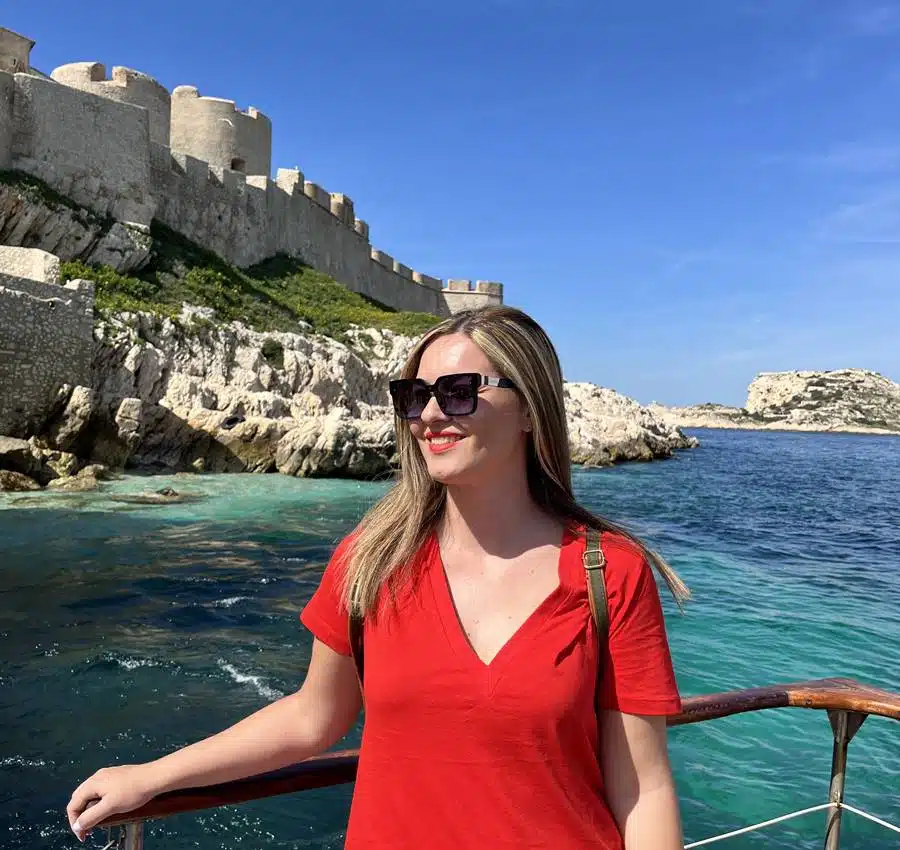
7. Park National des Calanques
The Calanques National Park is a paradise for nature lovers and those of you who seek breathtaking landscapes.
Calanques are narrow, steep-walled inlets found along the Mediterranean coast and the most beautiful examples of this formation can be found in the Massif des Calanques, in the Bouches-du-Rhône department.
The Calanques of Marseille extends for 20 km/12 miles in length along the coast between Marseille and Cassis, culminating in Mont Puget.
In this beautiful national park, you can admire unique flora and fauna, spectacular landscapes and dramatic cliffs overlooking mesmerizing turquoise waters.
If you are an adventure seeker, there are many activities offered such as kayaking, rock climbing, snorkeling, scuba diving, sailing and swimming among others!
The most popular coves are Calanque de Sormiou (the biggest calanque, known for rock climbing), Calanque de Sugiton (popular for hikers), Calanque de Morgiou, Calanque d’En-Vau and Calanque de Port-Miou (near Cassis).
Several tour operators organize daily boat trips to the national park from Marseille’s Old Port.
Explore Parc National des Calanques tours and activities
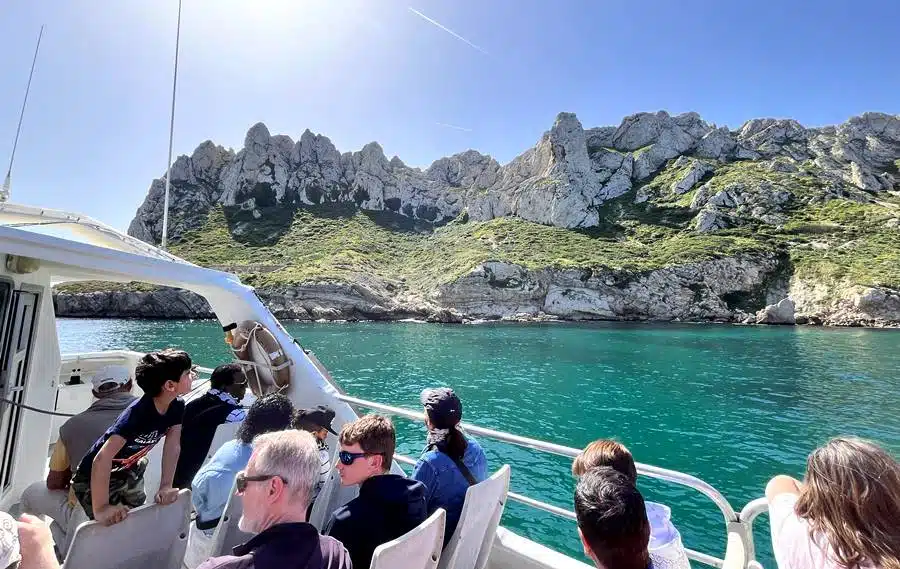
8. Frioul Islands
The Frioul Islands (Îles du Frioul) are a French archipelago located within the protected area of the Calanques National Park, about 4 km/2 miles off the coast of Marseille.
Frioul archipelago is made up of four scenic islands including Pomègue, Ratonneau, Tiboulen, and If, where the legendary Château d’If is located.
The islands are home to endemic flora and fauna and boast a rich historic heritage with fortresses, ramparts, beautiful beaches, hidden coves, and a variety of restaurants and shops for tourists.
L’île de Pomègues is connected to l’île de Ratonneau via a causeway and both islands can be visited on foot within a couple of hours.
There are ferry boat rides organized from Vieux-Port de Marseille. The ride takes 15 minutes each way and the boat disembarks passengers at Port du Frioul, from where you can explore the two islands on foot.
While there, make sure you visit the beautiful coves (calanques) of Saint-Estève and Morgiret, as well as Calanque de la Crine, often considered the most beautiful cove of the archipelago.
Check out Frioul Island tours and activities
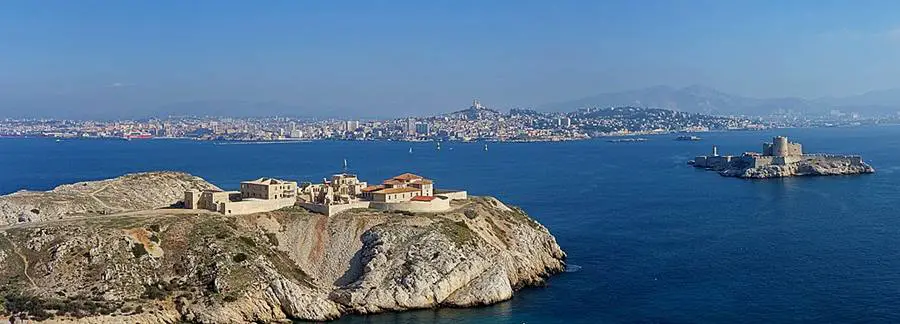
9. Cassis
Located 27 km/17 miles (a 45-minute drive) east of Marseille, Cassis is a charming port town and the French Riviera’s popular tourist destination.
This lovely town is known for its falaises (cliffs) and the Calanques (sheltered inlets), renowned wines, pebbly beaches, and a picturesque harbour filled with seafront cafes and restaurants.
While there, make sure you visit Cassis Market (Marché de Cassis), Plage de la Grande Mer, Plage du Bestouan, Cassis harbour, and its wonderful calanques such as Calanque de Port-Miou.
Check out Cassis tours and activities
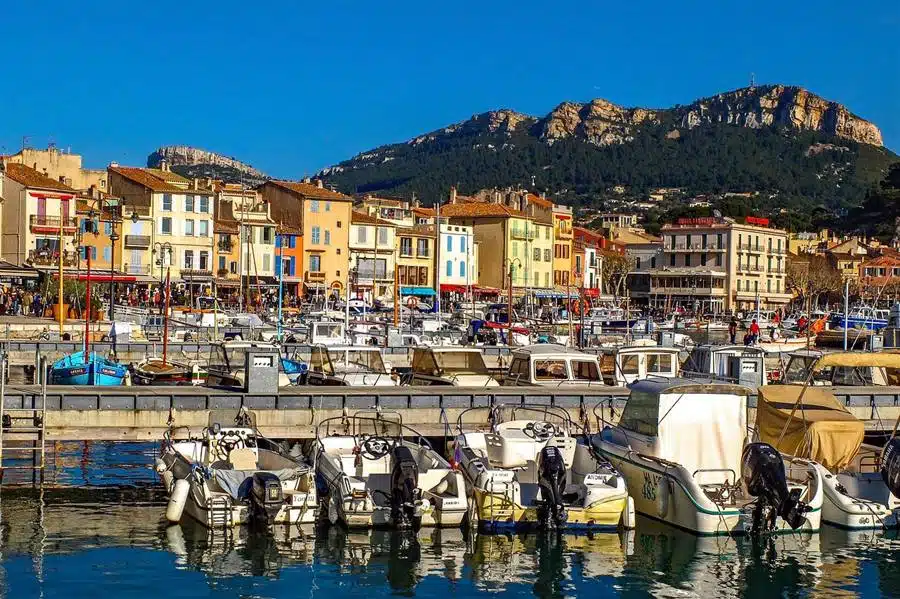
10. Aix-en-Provence
Aix-en-Provence is a university city in the Provence-Alpes-Côte d’Azur region situated 32 km/20 miles (a 40-minute drive) north of Marseille.
The birthplace of Post-Impressionist painter Paul Cézanne, Aix-en-Provence has always been an inspiration for painters, writers and musicians who used to live and work in the city.
Nowadays, you can visit the city’s numerous museums, art galleries, artists’ studios (Atelier Cézanne) or explore its historic monuments, fountains and squares.
One of the most lively places in the city is Cours Mirabeau, a beautiful tree-lined avenue where you’ll find cafes, eateries and the impressive, 19th-century Fontaine de la Rotonde with its extravagant sculptures.
The city is divided into two parts: the new part called Quartier Mazarin and the old, medieval part of the city with its narrow streets and the iconic Aix Cathedral (Cathédrale Saint-Sauveur d’Aix-en-Provence) dating from the 12th century, one of the main city’s symbols.
Aix-en-Provence is a historic city with many cobblestone areas that are not wheelchair-friendly. Make sure you make comfortable shoes while exploring the city.
Check out Aix-en-Provence tours and activities
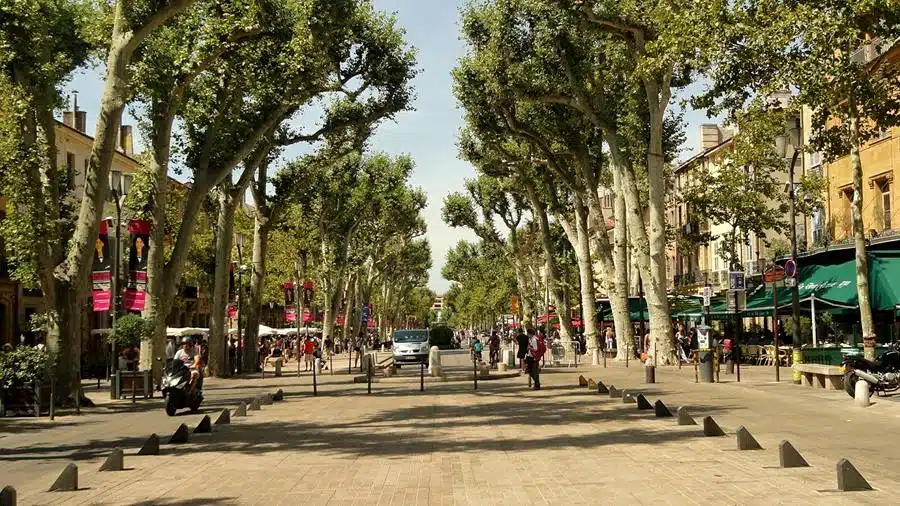
11. Avignon
The medieval city of Avignon is located roughly 100 km/62 miles (a 1h 15-minute drive) northwest of Marseille. Set on the Rhône River, Avignon is best known for being the seat of Catholic popes from 1309 to 1377.
The historic center of Avignon, which includes the massive Palais des Papes, Avignon Cathedral and the famous Pont d’Avignon (The Bridge of Avignon), was listed as a UNESCO World Heritage Site in 1995 due to its outstanding architectural and historic value.
Besides a large number of historic monuments and landmarks, Avignon is also famous for Festival d’Avignon, an annual arts festival that attracts tourists and art lovers from all across Europe.
Explore Avignon tours and activities
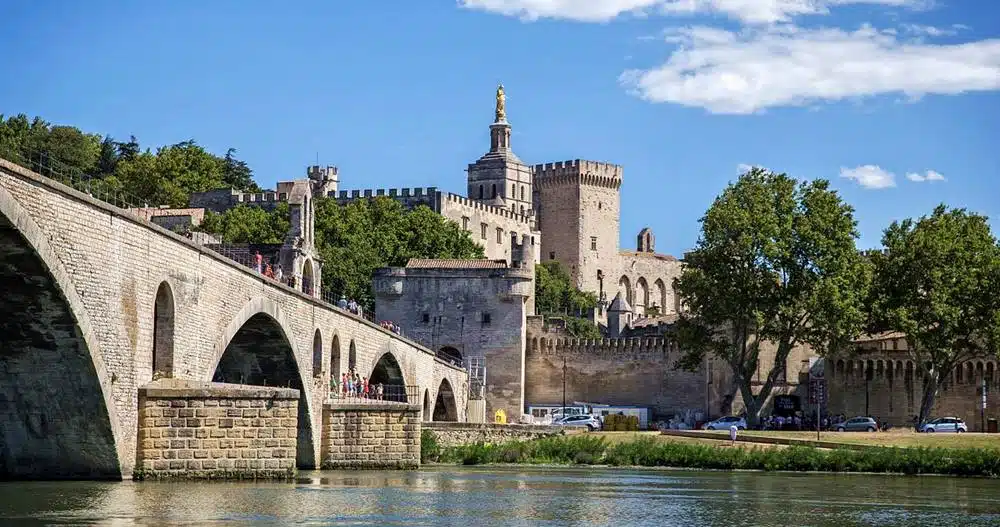
12. Orange Vélodrome
Last but not least, if you are a football fan you can visit Stade Vélodrome, home to the Olympique de Marseille football club. This massive, multi-purpose stadium has been a venue for the 1938 and 1998 FIFA World Cups and is the largest club football ground in France, with a capacity of 67.394 spectators.
Stade Vélodrome is located 3.7 km/2.3 miles (a 10-minute drive) south of Vieux-Port de Marseille. Guided tours are available.
Helpful Resources for Marseille Cruise Port
- MPCT Google Maps Location: Find the exact location of the port of Marseille.
- Find the location of La Joliette Cruise Terminal
- Cruise Ship Schedule: See when ships are in Marseille and plan your visit.
- Marseille Port Authority: Get fresh updates on cruise terminals.
- Marseille Tourism Office: Discover more about the top attractions and places to see.
- Local Weather Forecast: Get the latest weather updates to prepare for your day.
You may also like our cruise port guides to the Mediterranean, Caribbean, Northern Europe, USA & Canada, Australia & New Zealand
Adventour Begins contains affiliate links. If you make a purchase through these links, we may earn a commission at no additional cost to you. For more details, please see our Disclosure Policy



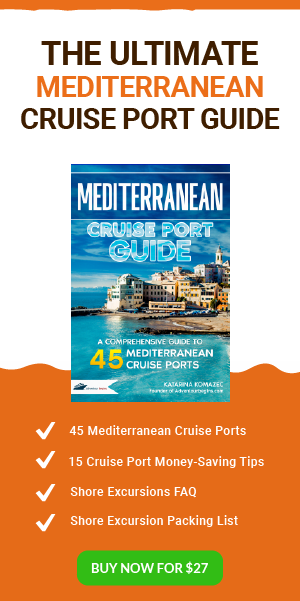

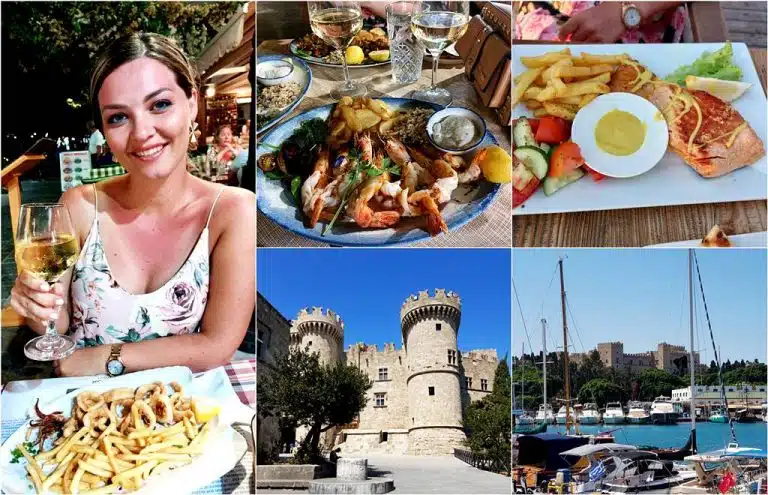
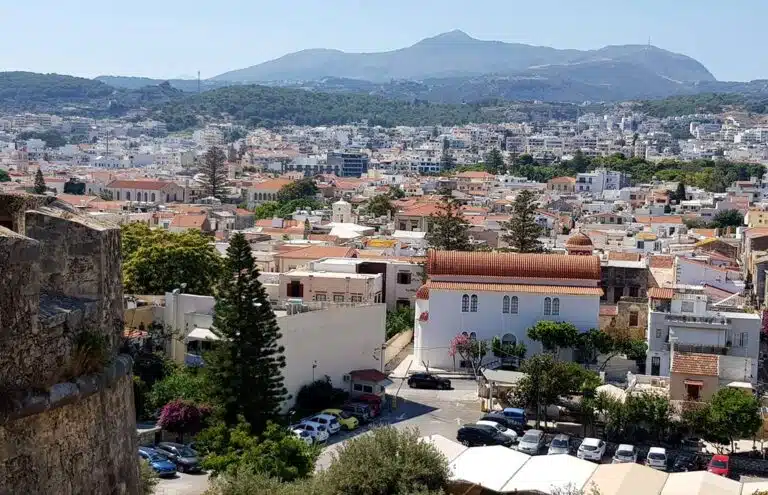


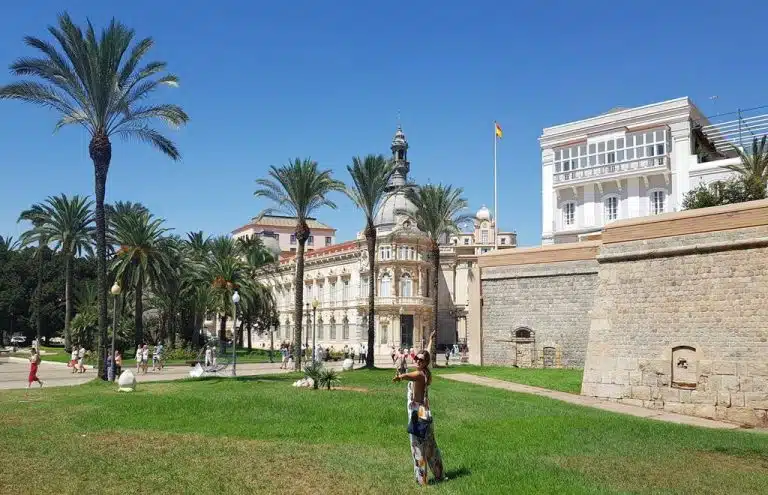
Great article!
Thank you! 🙂
Very informative, if you were to spend one night before you fly home, where would you stay. Flying to Heathrow England, gives you an idea what direction we will be going in. Cheers
Hi, thank you! I spent a few nights in Meininger hotel in Marseille, it’s located near La Joliette cruise terminal and it’s well connected by metro/bus to the airport and city center. Here’s the link on Booking, you can check it out https://booking.tp.st/Hav6CczQ. The airport is around 30 minutes by car and 45 minutes by bus from this hotel, while the nearest cruise terminal is within walking distance. Alternatively, you can book a hotel closer to the airport, but it’s better not to if you are planning to explore the city. Marseille is quite easy to get around and public transport works well, that was at least my experience. 🙂 Hope this info helps! Thanks for reading my blog!